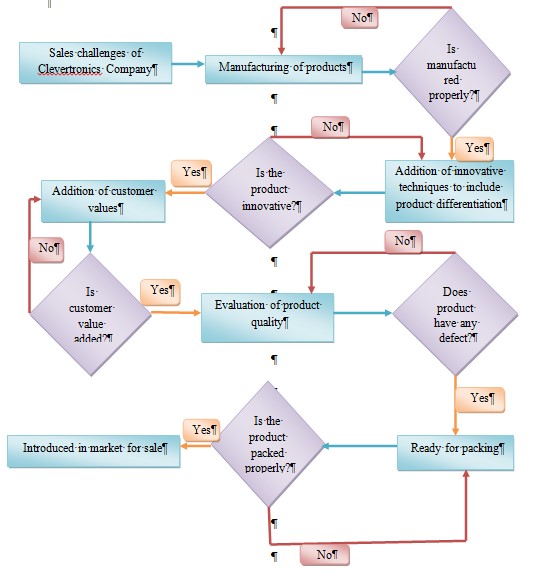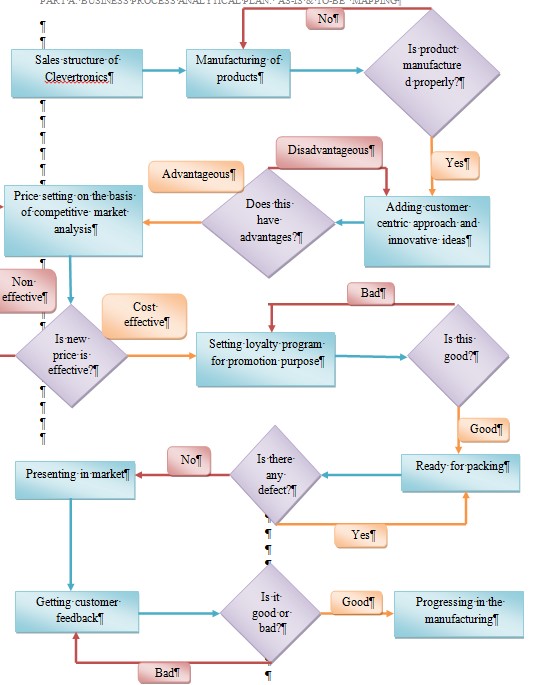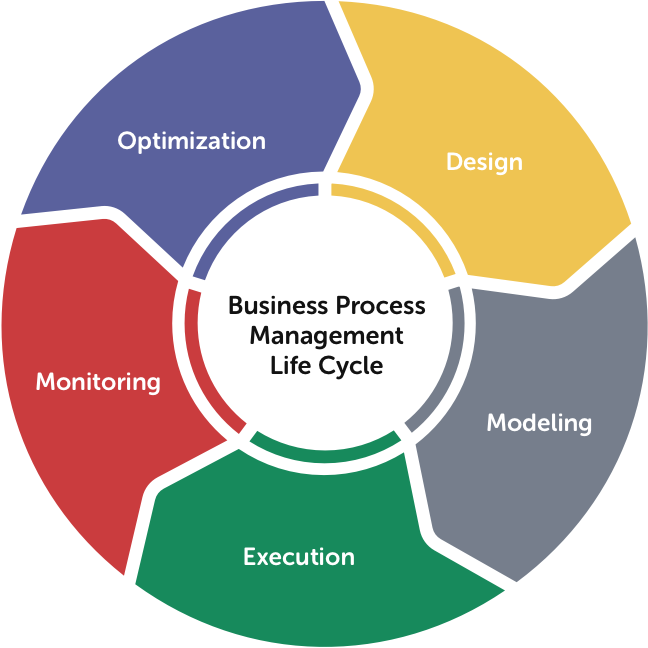Assignment Sample PROJ6009 Business Process Management
1. Introduction
A business process analytical plan (BPA) refers to the methodology that helps to view the different business processes along with the challenges associated with the process. It also includes the improvement methods for enhancing the efficiency as well as the effectiveness of the business operations that help to achieve the business goals and objectives.
This business report has included the “As-Is and To-Be” mapping process in order to elaborate on the current issues and risk factors within the Clevertronic organization and also the improvement methods with the help of various evaluation tools. The aim of this report is to develop a proper business analytical plan that would eradicate all the challenges and would successfully enhance the sales structure of the company.
2. Background of the company
Clevertronics is one of the leading emergency light manufacturing companies in the Australian market and has captured a good position in Australia as well as New Zealand. The company used to manufacture emergency lights, sound evacuation systems and also automated different monitoring systems (Clevertronics.com.au, 2020).http://PROJ6009 Business Process Management
The company is quite well known in the market due to its Customer-centric approaches and also product innovation system. The company has well knowledgeable employees who are quite experts in making the products and satisfying the customers’ needs very easily.
It has well-spread branches in 700 cities around Australia and even its products are fitted in Melbourne Cricket ground as well as in Sydney Opera House (Clevertronics.com.au, 2020).http://PROJ6009 Business Process Management
The goal of this company is to provide innovative products to every customer and to ensure high-quality services (Clevertronics.com.au, 2020). http://PROJ6009 Business Process Management
However, this report has mainly shed light on the sales structure of the company which has experienced some challenges. It is of utmost importance to mitigate all the challenges so that the company can maintain its fame as well as achieve its set mission and goals.
3. Challenges faced in the current sector and “As-Is” mapping
In order to run a business successfully and most importantly to maintain the same in the market, it is important to understand the business process efficiently. As mentioned by Ornat & Moorefield, (2018), a detailed understanding would help to recognize the challenges associated with the business process.
As argued by Schnase et al. (2017), all these challenges can be easily resolved with the help of a proper business analytical plan. In the report, the main research light has been put on the sales department of Clevertronics, where the company has faced some major issues. As per the company’s report, all these issues have been slowly damaging the image of the company, and therefore, it is required to be solved.
- Poor communication strategy: Despite having customer-centric approaches and innovative technology, the sales structure of the company has dropped down. The major reason behind this dropping is the poor communication system that hampers its overall purchasing structure.
As mentioned by Ezeonwumelu, Kalu & Johnson, (2016), poor communication within the team as well as with the target customers, can directly put a negative impact on the business process. As argued by Lenarduzzi & Taibi, (2016), the ineffective communication strategy would result in misaligned products and also in the poor advertising technique, which would ultimately decline the sales of the company.
- Price issue and overlooking competition: Estimation of the accurate price is another important aspect that controls the sales structures of the company. Clevertronics has several competitors, like Isolite, Ventilux, Etap 500 and many more in the market. Hence, the company needs to pay much attention while setting the price of any products.
As mentioned by Bazhenova, Bülow & Weske, (2016), only a customer-centric approach would not be efficient for any organization to gain a huge sales structure but along with this, the company needs to incorporate an accurate competitive strategy for overtaking the competitors.
- Lack of additional values: According to Polyvyanyy et al. (2017), different values play a major role in attracting customers and thus enhancing the sales structure for the company.
However, Clevertronic lacks this additional value which hinders its growth in both offline as well as online sales structures. As mentioned by Baggio & Sainaghi, (2016), this loyalty program must be arranged on a competitive basis so that the company can overtake the competitor’s position and thus would enhance sales growth.

Figure 1: As-Is Mapping
(Source: Created by the learner)
Based on these mentioned challenges, the “As-Is mapping” of the sales structure of Clevertronics has been diagrammatically presented in above figure 1.
4. “To-Be” mapping
In order to get rid of all the above-mentioned challenges, the company needs to incorporate changes in the sales process. As mentioned by Melosi, Campana & Cimatti, (2018), changes are the only constant and every business organization must undergo changes in order to experience improvement in their business process.
As mentioned in the above portion, the three major challenges which have been currently faced by Clevertronics are the ineffective communication strategy, lack of additional values in the case of promotional strategy, and lastly improper setting of price range by overlooking the competition in the market.
In order to progress in the business process, it is very important to understand the competitiveness within the market. As mentioned by Vanden Broucke & De Weerdt, (2017), the success of sales structure completely depends upon the
competitiveness present in the market and hence it is the preliminary criteria for every organization to look for competitive advantages while introducing the products in the market. In such an aspect, the company first needs to strengthen its communication platform in order to become customer-centric as compared to its previous approaches.
As mentioned by Melosi, Campana & Cimatti, (2018), for this building of a communication platform, the company can introduce ‘giving feedback’ options on both offline and online sites. In the case of offline, the company can provide complaint numbers or emails to every customer in order to put their valuable messages which would strengthen the communication with the customers.
These complaint messages would include both the complaints as well as recommendations for improvement which would help the company to ensure innovation in action. Similarly, within the company, an effective communication strategy is also required to establish so that employees can feel free to express their views on sales as well as advertising techniques

Figure 2: To-Be mapping
(Source: Created by the learner)
Secondly, the company needs to evaluate the range of prices in the market so that any competitors cannot steal from their customers. As mentioned by Rosa et al. (2017), including competitive price analysis within the business practice is another effective customer-centric approach.
This would surely help the company to maintain its position in the market as well as to please the customers accurately. For this purpose, the company needs to evaluate the entire market and after that is required to set the price of the products.
As argued by Ezeonwumelu, Kalu & Johnson, (2016), it is very important for every organization to take market competition in a very serious manner. Irrespective of this, this directly resulted in a decreased number of customers and thus reduced the sales revenue.
Thirdly, the company also needs to include proper additional value strategy within their promotion process as well as with their product structure even. As mentioned by Baggio & Sainaghi, (2016), additional values play a vital role in the case of gaining customer attraction and also to build brand awareness.
As argued by Polyvyanyy et al. (2017), additional values enhance the trustworthiness between the company and the customers which ultimately improves post-purchasing behavior.
This directly influences the customers to buy products from this selected brand and hence helps in enhancing sales structure. For this purpose, the company can arrange several loyalty programs which would help to retain customers.
As influenced by the view of Bazhenova, Bülow & Weske, (2016), companies can even announce some incentives for the products which would help to draw the attention of customers and boost the sailing procedures. Earning points, and getting rewards enhance customer loyalty and ultimately provide competitive advantages that help to make more customers in the sales process.
5. Conclusion
This entire report has sketched beautifully the business analysis process plan along with its pivotal values in the effective business management process. The report has shed light on the analysis of Clevertronics Company, an electronics manufacturing company, and has focused solely on its sales department.
All the challenges faced in the company, especially in the sales department, have been elaborated and the report has provided an “As-Is’ ‘ mapping for a better understanding of the process. The rapport has also contributed a major part in order to propose some to-be methods that can be incorporated within the business process of Clevertronics, especially in the sales process.
The proposed methods have been presented diagrammatically with the help of “To-Be” mapping which has helped to understand its effectiveness with the help of proper evaluating tools, such as Yes-No, Good-Bad, and Advantages-Disadvantages. Hence, the company can incorporate all of these to be methods for improving its sales structure and gain more profit rates in the future.
Reference list
Baggio, R., & Sainaghi, R. (2016). Mapping time series into networks as a tool to assess the complex dynamics of tourism systems. Tourism Management, 54, 23-33. Retrieved from: https://www.iby.it/turismo/papers/baggio_visibgraph-TM.pdf, [Retrieved on: 1st July, 2020].
Bazhenova, E., Bülow, S., & Weske, M. (2016, July). Discovering decision models from event logs. In International Conference on Business Information Systems (pp. 237-251). Springer, Cham. Retrieved from: https://www.researchgate.net/profile/Ekaterina_Bazhenova/publication/304480367_Discovering_Decision_Models_from_Event_Logs/links/5afd9c5aaca272b5d8cf1118/Discovering-Decision-Models-from-Event-Logs.pdf, [Retrieved on: 1st July, 2020].
Clevertronics.com.au, 2020, About us. Retrieved from: https://clevertronics.com.au, [Retrieved on: 1st July, 2020].
Ezeonwumelu, A. N., Kalu, C., & Johnson, E. H. (2016). Development of swim lane workflow process map for sales and inventory workflow management information system: A case study of petrospan integrated services, Eket, Akwa Ibom State, Nigeria. Mathematical and Software Engineering, 2(2), 57-65. Retrieved from: http://www.varepsilon.com/index.php/mse/article/viewFile/18/19, [Retrieved on: 1st July, 2020].
Lenarduzzi, V., & Taibi, D. (2016, August). Mvp explained: A systematic mapping study on the definitions of minimal viable product. In 2016 42th Euromicro Conference on Software Engineering and Advanced Applications (SEAA) (pp. 112-119). IEEE. Retrieved from: http://www.academia.edu/download/55399644/MVP_explained-_a_systematic_mapping_study_on_the_definitions_of_MVP_CR.pdf, [Retrieved on: 1st July, 2020].
Melosi, F., Campana, G., & Cimatti, B. (2018). Competences mapping as a tool to increase sustainability of manufacturing enterprises. Procedia Manufacturing, 21, 806-813. Retrieved from: https://www.sciencedirect.com/science/article/pii/S2351978918302270/pdf?md5=5382e52541c32e8e0b71f62725fdbd83&pid=1-s2.0-S2351978918302270-main.pdf, [Retrieved on: 1st July, 2020].
Ornat, N., & Moorefield, R. (2018). Process mapping as an academic library tool: Five steps to improve your workflow. College & Research Libraries News, 79(6), 302. Retrieved from: https://crln.acrl.org/index.php/crlnews/article/download/17004/18741, [Retrieved on: 1st July, 2020].
Polyvyanyy, A., Ouyang, C., Barros, A., & van der Aalst, W. M. (2017). Process querying: Enabling business intelligence through query-based process analytics. Decision Support Systems, 100, 41-56. Retrieved from: https://eprints.qut.edu.au/106408/6/106408b.pdf, [Retrieved on: 1st July, 2020].
Rosa, M. L., Aalst, W. M. V. D., Dumas, M., & Milani, F. P. (2017). Business process variability modeling: A survey. ACM Computing Surveys (CSUR), 50(1), 1-45. Retrieved from: https://eprints.qut.edu.au/61842/26/61842a.pdf, [Retrieved on: 1st July, 2020].
Schnase, J. L., Duffy, D. Q., Tamkin, G. S., Nadeau, D., Thompson, J. H., Grieg, C. M., … & Webster, W. P. (2017). MERRA analytic services: Meeting the big data challenges of climate science through cloud-enabled climate analytics-as-a-service. Computers, Environment and Urban Systems, 61, 198-211. Retrieved from: https://ntrs.nasa.gov/archive/nasa/casi.ntrs.nasa.gov/20140013036.pdf, [Retrieved on: 1st July, 2020].
vanden Broucke, S. K., & De Weerdt, J. (2017). Fodina: A robust and flexible heuristic process discovery technique. decision support systems, 100, 109-118. Retrieved from: https://lirias.kuleuven.be/retrieve/451478, [Retrieved on: 1st July, 2020].


